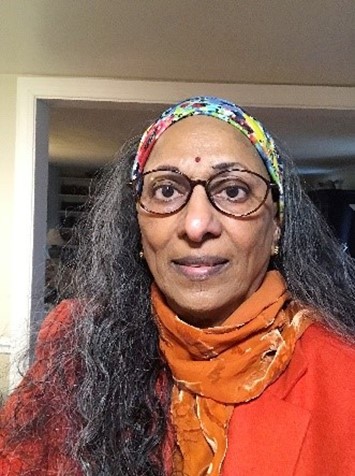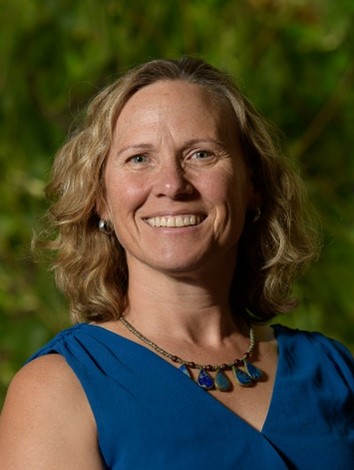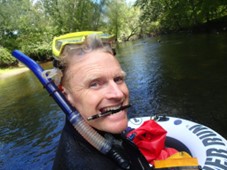PLENARY SPEAKERS

SEETHA COLEMAN-KAMMULA, Ph.D.
President, PFAS SolutionsNew Castle, DE USA
Why is PFAS a wicked problem?
A wicked problem is a problem that is difficult to solve because of incomplete, and changing requirements where the effort to solve one aspect of the PFAS problem may create other problems. In this talk I will outline technical and socio-economic drivers that had spurred development and use of PFAS, to the many ways it is released into our environment, connecting what we know about mobility of diverse types of PFAS through air, soil and water, the many ways it impacts the natural world (people and environments), and its un-equitable impact on economically disadvantaged communities to a greater degree. I will touch on our research at the Center for PFAS Solutions into solving the wicked problem of removing and ultimately destroying PFAS and how current solutions shift the burden from one part of our environmental system to another.
Biography
Seetha Coleman-Kammula, Ph.D., is the President and co-founder of PFAS Solutions, an independent not-for-profit organization committed to doing good science for a healthy environment. She is a serial entrepreneur and a former Senior Vice President of Basell, a Royal Dutch Shell and BASF joint venture.
Dr. Coleman-Kammula started as a research scientist in Amsterdam and held diverse positions in 4 countries managing R&D, strategy and business units. After retiring from Shell she served on Dow Chemical Company’s sustainability external advisory board and founded Simply Sustain LLC, a management consulting company in sustainability. She currently leads the Center for PFAS Solutions.
The Center for PFAS Solutions specializes in trace level analysis of Per- and Polyfluoroalkyl Substances (PFAS), a group of chemicals of concern. Through research and development of innovative test methods, they offer their clients products and solutions to problems resulting from the production, formulation, and end-use applications of PFAS.

Alison M. Meadow, Ph.D.
Associate Research ProfessorOffice of Societal Impact
University of Arizona
Engaged Research and Societal Impact: Linking Research and Evaluation to Engaged Research and Societal Impact to Improve Practice and Outcomes
We have solid (and ever-growing) evidence that engaged research practices - when researchers and community members, practitioners, and/or policy makers work together to examine problems and generate research in support of solutions - generate research that is more likely to be useful, usable, and used to inform behavior, practice, and policy. We also know that engaged research requires skills, resources, and time that are often in short supply. Furthermore, when engagement is not undertaken ethically and appropriately, we can undermine even our best intentions and do further harm to communities and relationships of trust. In this talk, I'll discuss some of the principles of engaged research and how we can use evaluation practices as tools for reflecting and learning that will help us be more effective in our engagement practices and help generate more positive and long-lasting impacts for the people we work with.
Biography
Alison M. Meadow is an Associate Research Professor in the Office of Societal Impact at University of Arizona. She received a Bachelor's degree in Native Studies and Anthropology from Trent University in Ontario, Canada; a Master's in American Indian Studies from University of Arizona; and a Ph.D. in Anthropology from the University of Alaska Fairbanks. Her Ph.D was completed through the interdisciplinary Resilience and Adaptation Program at UAF. Alison's research focuses on the process of linking scientists with decision makers to improve the usability of climate science, with a particular emphasis on evaluating the societal impacts of research. She works with researchers and research programs to plan effective engaged research efforts and assess the outcomes and impacts of their work. Alison also works, through the NOAA-funded Climate Assessment for the Southwest, to support communities in the Southwest as they undertake climate change adaptation planning efforts. Outside of work, Alison can usually be found outside! She is an avid open water swimmer, hiker, and runner (in a family of mountain bikers) and loves the mountains, deserts, and lakes of Arizona.

Erik L. Silldorff, Ph.D.
Restoration Director at the Delaware Riverkeeper Network, Bristol, Pennsylvania
Aquatic Life in the Delaware River Basin: Our Unique History, Past Successes, and Persistent Challenges
The 13,000 square miles (34,000 sq.km.) of the Delaware River watershed are in many ways extraordinary, and yet this watershed is also quite ordinary, with countless positives and negatives that have resulted from 400 years of choices – good and bad. Unlike many rivers in the eastern United States, migratory fish can still reach hundreds of kilometers into the headwaters because we have (fortunately!) failed to dam the river’s mainstem. Freshwater mussels persist at densities of a million animals per kilometer of river for much of its length, and the river serves as a biological reference benchmark for rivers throughout the northeastern United States. Yet end-of-pipe ammonium is still permitted at 35 mg/L right here in Philadelphia and throughout the Delaware estuary, and dissolved oxygen sags below 50% saturation annually during summer. Streams and rivers are “impaired” in all corners of the watershed, and more than 50 years after passage of the Clean Water Act we struggle to reverse these impairments. I share stories and anecdotes, data and conclusions from a career spent largely fighting here in this Delaware River watershed, fighting and learning. This ‘stream and its valley’ continues to inform and guide, and I explore how the currents and eddies sweep us on this sinuous journey toward knowledge, protection, and restoration.
Biography
Erik is the Restoration Director and senior scientist at the Delaware Riverkeeper Network, a fierce environmental advocacy organization working to protect and restore streams and rivers throughout the Delaware River watershed. Erik’s research and professional career span government agencies, research universities, natural history museums, consulting firms, and NGOs throughout the United States. For the last 20 years, Erik has probed the corners of the Delaware Basin through biological assessments, research on freshwater mussel declines, exploiting native migratory fish for controlling invasive species, and following the geologic trail into past as well as surprisingly contemporary ecological threats. In policy and regulatory arenas, Erik has played central roles in nutrient criteria development, ecological flow standards, wastewater permitting, and anti-degradation policies. His research into nutrient criteria helped reinitiate long-stalled policies to eliminate hypoxia in the Delaware estuary, and turn the tide for our critically endangered Atlantic sturgeon. Erik continues to enjoy the murky challenges of applied research and restoration ecology, and bringing science into environmental advocacy. He received his undergraduate degree from Cornell University, and both his master’s in applied statistics and his PhD in ecology from UC Santa Barbara.

